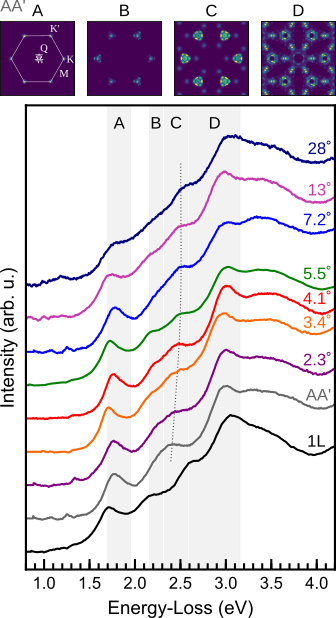Moiré twist angle underpins the interlayer interaction of excitons in twisted van der Waals hetero- and homostructures. The influence of twist angle on the excitonic absorption of twisted bilayer tungsten diselenide (WSe2) has been investigated using electron energy-loss spectroscopy. Atomic-resolution imaging by scanning transmission electron microscopy was used to determine key structural parameters, including the nanoscale measurement of the relative twist angle and stacking order. Detailed spectral analysis revealed a pronounced blueshift in the high-energy excitonic peak C with increasing twist angle, up to 200 meV when compared to the AA′ stacking. The experimental findings have been discussed relative to first-principle calculations of the dielectric response of the AA′-stacked bilayer WSe2 as compared to monolayer WSe2 by employing the GW plus Bethe-Salpeter equation approaches, resolving the origin of higher energy spectral features from ensembles of excitonic transitions, and thus any discrepancies between previous calculations. Furthermore, the electronic structure of moiré supercells spanning twist angles of ∼9.5–46.5∘ calculated by density functional theory were unfolded, showing an uplifting of the conduction band minimum near the Q point and minimal change in the upper valence band concurrently. The combined experiment/theory investigation provides valuable insight into the physical origins of high-energy absorption resonances in twisted bilayers, which enables one to track the evolution of interlayer coupling from tuning of the exciton C transitions by absorption spectroscopy.
Reference

